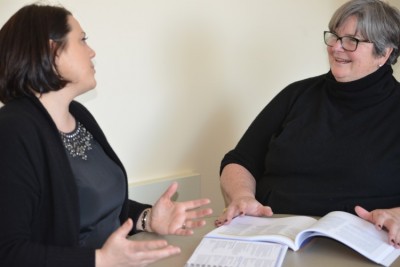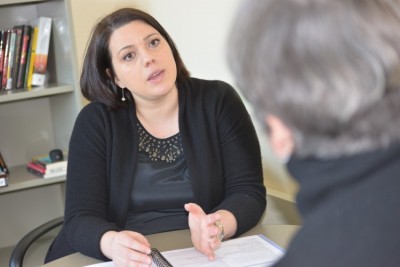
Neag School of Education faculty members Bianca Montrosse-Moorhead and Suzanne M. Wilson are working with scientists, science educators, and teacher leaders at the American Museum of Natural History and other partners to raise the quality of science education in the U.S. and meet Next Generation of Science Standards.
Developed by the National Academy of Science’s National Research Council, the Next Generation of Science Standards outline the performance expectations, disciplinary core ideas, scientific practices, and crosscutting concepts that all kindergartners through 12th-graders should know. To help assess progress in meeting them, UConn researchers are partnering with the Gottesman Center for Science Teaching and Learning at the American Museum of Natural History and the University of California Berkeley’s Lawrence Hall of Science to develop both a middle school ecology curriculum and the professional development framework needed to teach that curriculum effectively.
Documenting What Students – and Teachers – Learn

Wilson, previous to joining Neag as Endowed Professor of Teacher Education, had served for five years at Michigan State, where she took part in a project that laid the foundations for the current work, “Learning Science as Inquiry with the Urban Advantage.” Today, she and Montrosse-Moorhead are focused on investigating the effects professional development has on teachers’ knowledge and practice. To do this, the two, along with a team of Neag graduate student research assistants, have developed a system that will document what teachers as well as students learn from a set of curricular materials, which focus on the real-life and harmful invasion of zebra mussels in the Hudson River.
“You can’t just put teaching materials into teachers’ hands and expect them to figure it out.”
—Neag Endowed Professor of Teacher Education Suzanne Wilson
“You can’t just put teaching materials into teachers’ hands and expect them to figure it out,” says Suzanne Wilson, Neag Endowed Professor of Teacher Education. “Teachers need to learn and fully understand that material they’re teaching, and that means they need to engage with the materials themselves. They also need to understand options for how to best teach the material to their students.”
“Science education reform,” Wilson says, “has traditionally been a tough nut to crack. But if we can get teachers immersed in, and excited about, scientific inquiry, they can get kids excited about it, too. It’s important to remember that not all middle school teachers are science experts. Many teach more than one subject, or are elementary teachers who’ve moved up to the middle school-level and are finding their way.”

Developing tools to evaluate teacher professional development efforts is key, says Montrosse-Moorhead, Neag School assistant professor of measurement, evaluation and assessment.
“On the whole, despite growing agreement around best practices for professional development, rigorous studies that test these practices produce mixed results,” she says. “We still do not know enough about how to provide professional development that produces long-term, sustained results for teachers and their students across the wide variety of contexts in which science is taught. It’s exciting to be part of and contribute to this national conversation.”
The Potential to Expand
If successful, Wilson and Montrosse-Moorhead’s measurement tools could be used to evaluate the effectiveness of similar future professional development efforts and help advance national science education overall. Their work is a component of a larger four-year, $3 million National Science Foundation grant that made the total project possible.
“One of the hopes of all involved,” Wilson says, “is for the curricular materials to expand beyond its current use in New York City public middle schools, and that it be taught first to teachers, and then to students, throughout the country.
“Our collective goal is to develop engaging curriculum materials, high-quality professional development that supports teachers learning how to teach those materials in their classrooms, and authentic measures that can assess both teacher and student learning,” Wilson says. “Like the scientific inquiry being done by students during the unit, developing a system to evaluate the unit’s effectiveness can be messy. There’s no one formula involved. It’s been a process of discovery, and we’ve all learned a lot. We’re hoping this project helps advance science education in meaningful ways for teachers and their students.”
 Facebook
Facebook
 Twitter
Twitter
 LinkedIn
LinkedIn
